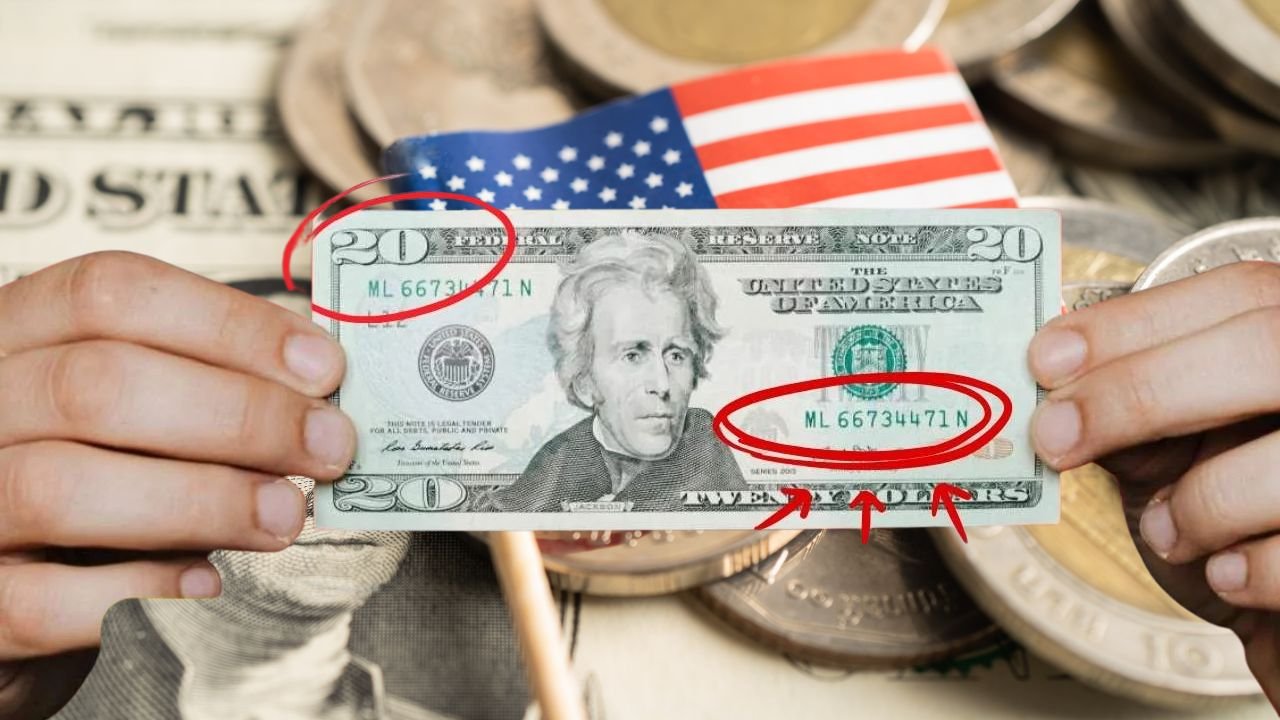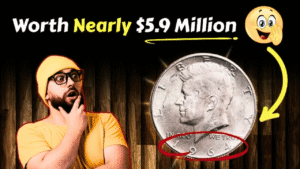Ever checked your wallet for hidden treasure? A rare $20 bill with an upside-down Treasury seal could be worth up to $95,000. This guide will show you how to spot it, why it’s so valuable, and how to turn pocket change into a fortune.
What Makes This $20 Bill So Special?
A printing error from 1996 created a small batch of $20 bills with an upside-down Treasury seal. These misprinted notes slipped into circulation, making them a collector’s dream. Their rarity and unique flaw drive their value sky-high.
The 1996 Printing Error
The U.S. Bureau of Engraving and Printing made a mistake in 1996. A tiny number of $20 bills were printed with the green Treasury seal flipped upside down. Only a few escaped into the wild, making them incredibly rare.
Why Collectors Love It
Collectors chase these bills for their scarcity and historical quirk. A pristine bill from this batch sold for $95,000 at a 2024 auction. Unique serial numbers or uncirculated condition can boost value even more.
How to Identify the Rare $20 Bill
You don’t need to be an expert to spot this gem. A quick glance can reveal if your $20 bill is a winner. Here’s what to look for:
Key Features to Check
- Treasury Seal: Look at the green seal on the right side of the bill’s front. Is it upside down?
- Year Printed: Check the bottom corner for “1996.”
- Serial Number: Unique or repeating digits (like 77777777) can increase value.
- Condition: Crisp, unfolded bills are worth more.
Quick Reference Table
| Feature | Location on Bill | What to Look For |
|---|---|---|
| Treasury Seal | Right side, front | Upside-down orientation |
| Year Printed | Bottom corner | Must say 1996 |
| Serial Number | Both sides, front | Unique or repeating digit patterns |
| Condition | Entire bill | Crisp, uncirculated, no folds |
Where Could You Find This Rare Bill?
These valuable $20 bills are still out there. They’ve been spotted in everyday places like:
- ATMs: Check your cash withdrawals.
- Store Change: Look at bills from shops or restaurants.
- Tip Jars: Some have been found in coffee shops or bars.
- Old Stashes: Check drawers, wallets, or piggy banks.
Since $20 bills are common, most people don’t inspect them closely. Your next grocery run could uncover a jackpot!
How to Verify and Sell Your Rare Bill
Found a potential winner? Don’t spend it yet. Follow these steps to confirm its value and cash in.
Step 1: Inspect Carefully
Double-check the seal, year, and serial number. Compare it to a regular $20 bill to confirm the error.
Step 2: Get It Graded
Send your bill to a professional grading service like PCGS Currency or PMG. They’ll verify authenticity and assign a condition grade. Higher grades mean higher value.
Step 3: Sell Smart
- Auction Houses: Heritage Auctions or Stack’s Bowers specialize in rare currency.
- Currency Dealers: Local or online dealers can offer quick cash.
- Online Marketplaces: eBay or specialized forums, but beware of fees and scams.
Pro Tip: Protect Your Bill
Store it in a protective sleeve to avoid damage. A single fold can drop its value significantly.
Why This Hunt Is So Exciting
The thrill of finding a rare $20 bill has sparked a modern treasure hunt. Social media platforms like X are buzzing with people sharing wallet checks and tips. Some even ask banks for 1996 $20 bills to increase their odds.
Real-Life Finds
- A New York barista found one in a tip jar in 2023, selling it for $45,000.
- A Texas retiree discovered one in an ATM withdrawal, fetching $80,000 at auction.
- A Reddit user posted about finding one in change, sparking a viral thread.
This hunt turns everyday cash into a potential windfall. It’s like a lottery ticket you already own!
Other Rare Bills to Watch For
The upside-down seal isn’t the only valuable error. Keep an eye out for these:
- 1996 $100 Bill Misprint: Inverted serial numbers, worth $10,000–$50,000.
- 1985 $20 Star Note: Rare replacement notes, valued at $500–$5,000.
- Double Denomination Errors: A $20 bill printed over a $10, worth up to $100,000.
FAQs About the Rare $20 Bill
1. How rare is the 1996 upside-down seal $20 bill?
Only a small batch from 1996 has this error, making it extremely rare. Exact numbers are unknown, but few remain in circulation.
2. Can I still spend the rare $20 bill?
Yes, it’s legal tender, but don’t! Its collector value far exceeds its face value.
3. How do I know if my bill is uncirculated?
An uncirculated bill is crisp, with no folds, creases, or wear. It looks fresh from the mint.
4. Where can I sell my rare $20 bill?
Try auction houses, currency dealers, or reputable online platforms. Always verify buyer credibility.
5. Are other years’ $20 bills valuable?
Most aren’t, unless they have unique errors or serial numbers. The 1996 upside-down seal is the most famous.
Start Checking Your Wallet Today!
A $20 bill worth $95,000 could be sitting in your pocket right now. Take a moment to inspect your cash, especially 1996 bills. This tiny printing mistake could lead to a life-changing payday. Share your finds on social media or with friends to join the treasure hunt. Who knows? Your next $20 might be a fortune in disguise!




